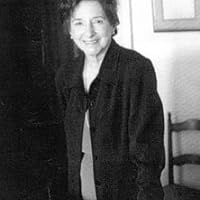By Gary A. Kulhanjian
Special to the Mirror-Spectator
I was motivated to write this tribute and remembrance of my friend and professional colleague on the 70th anniversary of her blockbuster novel, A Houseful of Love. It was in the dawn of her career and profession in higher education that led to her rightful acclaim.
She was widely published as a writer of fiction and non-fiction.
Born in New York City, she lived in Manhattan. Later she resided in Maine, Virginia, southern France, the Near East and Russia. She had three sons. She died in 2013, at age 90.
Returning to her celebrated novel, it included and described the temperament of many Armenian immigrants who settled in New York City by the 1920s and up to the 1950s. The author reminds her readers that the characters and their names were all fictitious; however, their personalities reflected many newcomers from different lands. The businesses of newcomers represented the multiplicity of ethnic groups of diverse origins also. The Armenian enclave moved up from 14th to 88th Streets in Manhattan. In later years, the Armenians moved uptown to Washington Heights, where they purchased a church which became the oldest Armenian institution in Manhattan. Some Armenians resided in Brooklyn and the other boroughs of New York City. When they congregated, they always reflected the names of the towns and villages they originated from in their ancestral land of Armenia occupied by the Turkish Empire. For example, Marashetsi, Smyrnatsi, Kesariatsi, Dikranagerdtsi and many other places in ancient Armenia under Turkish hegemony. These names were often misspelled in English. The Turkish government has changed many of these names in the locations after the 1915 Genocide with the deracination of the Armenian, Greek, and Assyrian populations.








